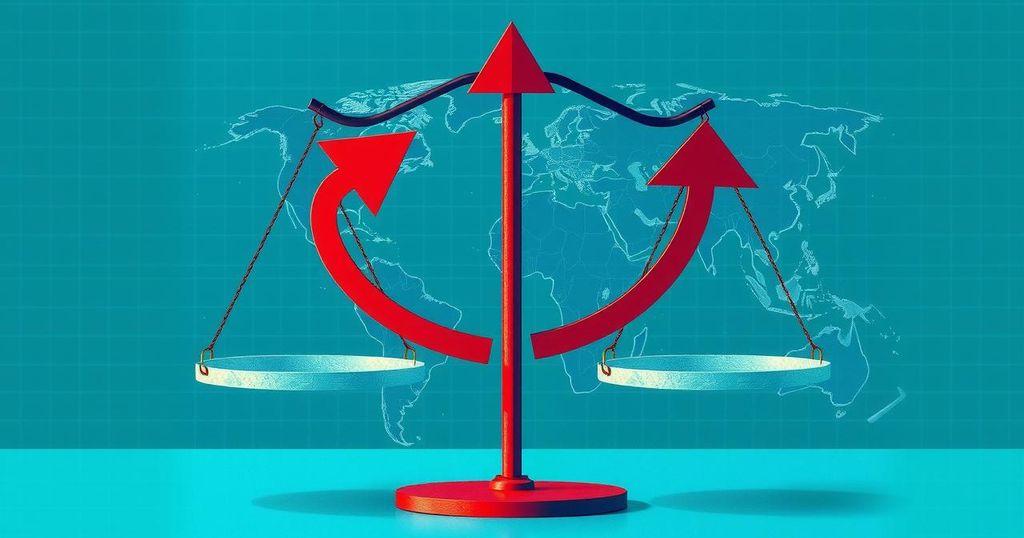President Trump has introduced substantial new tariffs, including a 10 percent baseline tariff effective April 5, with higher rates for nations deemed bad actors like China and the EU. Canada and Mexico are exempt, while imports from China will face additional fees. The elimination of duty-free exemptions on small parcels is expected to disrupt low-cost product imports. Overall, these measures signify a strategic shift in U.S. trade policy.
On Wednesday, President Donald Trump announced significant new tariffs aimed at transforming trade dynamics, characterizing it as a “declaration of economic independence.” Effective from April 5, a standard 10 percent baseline tariff will apply globally, with higher tariffs set for countries considered as significant trade adversaries. Major stakeholders, including the European Union and China, will face elevated rates due to perceived unfair practices in trade relations.
The new tariffs will take effect in stages, with the baseline 10 percent levy activating at 12:01 AM on April 5. Additional tariffs for particular nations recognized as the worst offenders will begin on April 9, featuring a 20 percent tariff for the European Union and a staggering 34 percent for China. The overall Chinese tariff, inclusive of a prior imposition, escalates to 54 percent. Other affected countries include India (26 percent), South Korea (25 percent), and Japan (24 percent). Trump emphasized that, “for nations that treat us badly, we will calculate the combined rate of all their tariffs, non-monetary barriers, and other forms of cheating.”
Notably, the new tariffs exempt key trading partners Canada and Mexico, which are currently subject to previously imposed tariffs. These economies remain under the framework of the US-Mexico-Canada Agreement, which preserves certain exemptions. However, should these countries negotiate new agreements with the U.S., they may still be impacted by the baseline rate. Pre-existing steel and aluminum tariffs will continue, and countries like Cuba and North Korea will not face the new tariffs due to existing trade sanctions.
Additionally, starting Thursday, a 25 percent tariff on imported automobiles and components will be instituted, heightening challenges for the automotive industry. This development follows prior tariffs on steel and aluminum, which will also include canned products. Investigations into copper and lumber imports could further influence tariff policies, while similar actions are being considered for semiconductors and pharmaceutical products.
Moreover, Trump has eliminated the duty-free exemption on small parcels from China, a change expected to significantly impact the influx of low-cost consumer goods. This new regulation will impose duties of either 30 percent or $25 per item, with rates potentially increasing after June 1. This decision follows concerns about the rapid growth of Chinese e-commerce platforms contributing to a surge in low-value imports.
In summary, President Trump’s recent tariff announcements signify a shift in U.S. trade policy, characterized by a standard baseline tariff and increased rates for specific trading partners deemed uncooperative. While key allies Canada and Mexico remain exempt from these new tariffs, major economies like China and the EU are being targeted. The adjustments aim to address perceived unfair trade practices, while also reshaping the landscape for small parcel imports from China. This evolving tariff landscape is poised to have lasting implications for global trade relations and domestic markets.
Original Source: vietnamnews.vn




